Main Content
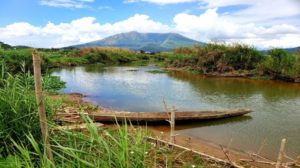
There are many avenues of work that a research-type occupation or program can, and most likely will, take you in. As you enter into a research career, especially one in the realm of biology, you will find yourself in an actual office environment, but you may also find yourself in a lab, trying to get the data that your thesis or dissertation is dependent on (and for graduate students, trying to ignore the mental, ticking clock reminding you that you are not in that program forever). The sunrise, the sunset, and the moon and the sun, become your friends as you travel to the lab at your institution to finish that chemical reaction you placed in the machine or to get in “the zone” as you process data on the computer. This traveling has a bit of a thrill to it at times, but could become repetitive. However, research positions sometimes offer more than just traveling back and forth between your home and your institution (although your institution will inevitably become your second home). The opportunity to travel to workshops and conferences in other states or countries brings a thrill of its own, as you get to travel to new places to meet new people, potential collaborators, and forge new friendships; all while doing this you get to share your science and the experiences of the career paths you’ve chosen. While all of these experiences make for fantastic memories and learning experiences, one of the most unique and exciting parts of my work is bringing myself to my office outdoors: field research.
During my years of studying the diversity of reptiles and their evolutionary biology, I have traveled to China, Puerto Rico, and Mexico to find lizards and snakes of all sorts of sizes, body types, colors, and unique biogeographic histories. However, in this blog post I’m going to take you on a small trip with me to my favorite place that I have traveled to so far for my herpetological research: the Philippines.
My research brought me to the Philippines to study the evolution of a particular group of snakes that inhabit lakes and streams in the Philippines; a region of the world I had never seen, a language I had never spoken, and a culture I had never experienced (not to mention exquisite food I had never eaten). The next 30 days would require me to learn how to adapt. I flew into Makati City, a part of the metropolis that is the Greater Manila Area. It was very clear that I stood out as someone not from the area in the city, but I had joined this trip with a University of Kansas (KU) professor, who had been here countless times over the decades, along with a professor from Mindanao in the Philippines. These connections I made would soon change to be much more.
A few days in the city had passed and, in that time, I was able to experience cuisine like I had never imagined while gazing upon the Sierra Madres mountains from the top of my hotel. Being in Makati City, I learned how to handle the political details of obtaining permits to do field research in the Philippines, a process that would involve me going into country-, province-, municipal-, and village (called ‘barangays’ in the Philippines)-level offices to obtain permission, explain my research, and attend meetings to pitch my research to government workers and local individuals. Some may think that this sounds like a drag, but I knew that this was all part of the process to study the very life and land, and now the culture, that would become a part of my work, and myself. After a few days, it was time to head off to the ‘provinces,’ the rural areas outside the greater Manila Area, to start investigating sites for field work, meet my soon-to-be collaborators at the local university, Ateneo de Naga University, and request permission to do research in the biodiverse and still-to-be-explored region of Luzon Island, the Bicol.
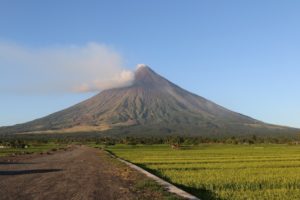
Taking a domestic flight from Manila to Camarines Sur, I couldn’t help but marvel at the difference in landscape. Skyscrapers and buildings have now been replaced and dwarfed by mountains and volcanoes. I couldn’t help but wonder if this is what Edward H. Taylor, an American biologist from the University of Kansas, known for his enormous contributions from his herpetological work in the Philippines and other countries, felt like as he first gazed upon the landscape of the country. Getting out of my plane, I was greeted by the beautiful (and active) Mount Mayon less than a mile away. Within less than a week into my trip, I already have seen landscapes I never dreamed of seeing. Picking us up from the airport were my collaborators from Ateneo de Naga University (ADNU), who eventually introduced me to a student there who was interested in becoming a researcher. At first my relationship with everyone on this trip was very professional. The KU, ADNU, and Mindanao professors, and the ADNU student, introduced me to a wealth of individuals who worked at ADNU, as well as several barangay chairpersons, with whom we dined, laughed, and discussed our work. There is something about taking what you are passionate about, in my case the herpetofauna of the Philippines, and spreading that passion to others that makes this so worthwhile. You get to show others why they should care about these topics, and while traveling to do field research, these connections you make slowly (or quickly, as was in my case) transform into friendships and collaborations. And those two things will always, at the very least, improve the impact and magnitude of your work.
I came to the Philippines alone, but quickly we assembled into a team to hit one overarching goal: to learn more about and protect the fauna of the Philippines, all while showing others why they should do the same. Within the next few weeks, I traveled to a myriad of other areas in search of the aquatic snakes that I came to see. Forests, rivers, lakes, mountains, islands…all of these habitats I found myself in. Not only did I find the snakes I was looking for, but I was fortunate enough to find a diverse array of snakes and lizards during my exploration with the team. We quickly waded through rivers before high tides flooded us out to sea; we island-hopped in boats with only the stars in the sky to guide us to our destinations; we interacted with and got the kind assistance of locals to find the wildlife we were in search of; I took photos of snakes as I sank in mud that stopped at my hips; I slept in structures with researchers and about 30–40 geckos as my roommates; I met individuals from the barangays that so kindly opened up their homes to me and their land to find what I was looking for; and without a doubt, I gained knowledge and memories that not only enhanced my research and work, but my life.
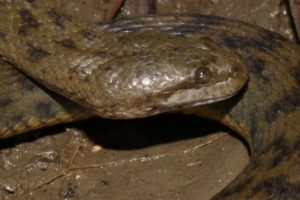
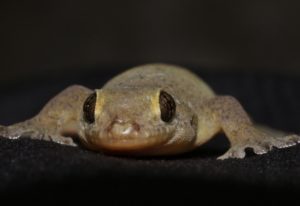
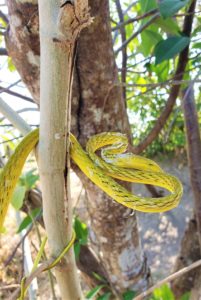
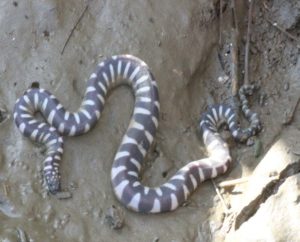
Perhaps a blog post isn’t enough to really emphasize what it’s like to do field research and travel. In a way, it’s transformative. Those that I met in the Philippines opened their homes to me; they opened their lives to me; and they opened their country. I got to see the regions that I have only seen photos of or read about in scientific papers and books. This allowed me to fully connect the ideas I am coming up with and the pieces of information I slowly gather from my data back in the lab at Rutgers University-Newark in New Jersey. You will start to piece together the whole as you explore. And as you explore, you will make new discoveries and find yourself moving forward with unforgettable stops along the way. New projects will come your way; new ideas will come to mind; more knowledge, more thrilling experiences and memories (and in my case, definitely some new recipes for the kitchen). However, there is something that is extremely important to mention at the end of all of this. Those that I met through all of this didn’t just become professors, or deans, or people helping me with my research. They’re not just colleagues either. And no, they’re not just teammates or collaborators. They’ve become friends. And with everything I’ve mentioned here, sharing these experiences with those you have connected with is something that will make field research an unforgettable and permanent experience. So, go out! Do field research. Bring your office and work out the door and into the field. It can be on the other side of the world, or it can be an hour drive away to a unique field site that becomes the locality for your creative project. And who knows? Maybe someday you too will end up writing a blog post about field travel as you wait for your next flight back home from an out-of-state museum for research!
Article by Justin Bernstein, PhD Candidate at Rutgers University-Newark, New Jersey, USA
4-H Herp Blog edited by Lisa Rothenburger, County 4-H Agent, Rutgers Cooperative Extension; Sara Ruane, PhD, Assistant Professor, Department of Biological Sciences, Rutgers University-Newark